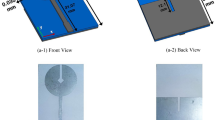Abstract
Decreasing the electric length of an antenna results in increasing its input reactance that becomes greater than its input resistance, resulting in a significant rise in its quality factor and in a drastic reduction of its potential operating bandwidth. For such small antennas, namely ESA for Electrically Small Antenna, passive matching is restricted by the gain-bandwidth theory, providing narrow bandwidths and/or poor gain. This limitation can be overtaken by using antenna matching networks based on non-Foster components. In previous studies, non-Foster components are used to cancel the reactance part of the ESA, and then passive matching may be introduced to transform the net input impedance toward 50Ω, which leads to an increase in the bandwidth. In this paper, a design methodology is put forward on three different topologies all based on combined passive and active matching networks. A described step-by-step design to decrease the antenna quality factor is discussed. A comparison is made between these topologies along with a discussion on their limitations and ability to increase the bandwidth and radiation efficiency of ESA. The third topology presented in this paper is a novel one that proposes a three-stage matching network and exhibits both the widest matched bandwidth and an increase in the efficiency of the whole system compared to previous approaches. In order to make this comparison, a new indicator to estimate the whole system radiated power efficiency is introduced and validated by comparison with a full EM simulation. Moreover, actual implementation of the two most interesting techniques are detailed and associated measured results are carefully compared to simulations.

























Similar content being viewed by others
References
Lopez, A. R. (2004). Review of narrowband impedance-matching limitations. IEEE Antennas and Propagation Magazine,46(4), 88–90.
Jacob, M. M., Long, J., & Sievenpiper, D. F. (2012). Broadband non-Foster matching of an electrically small loop antenna. In Proceedings of the 2012 IEEE international symposium on antennas and propagation, pp. 1–2.
Xia, Y., Li, Y., & Zhang, S. (2019). A non-foster matching circuit for an ultra-wideband electrically small monopole antenna, In 13th European conference on antennas and propagation (EuCAP 2019).
Chu, L. J. Physical limitations of omnidirectional antennas physical limitations of omnidirectional antennas.
Yaghjian, A. D., & Best, S. R. (2003). Impedance, bandwidth, and Q of antennas. In IEEE antennas and propagation society international symposium. Digest (Vol. 1, pp. 501–504).
Wheeler, H. A. (1947). Fundamental limitations of small antennas. Proceedings of the IRE,35(12), 1479–1484.
Bode, H. W. (1945). Network analysis and feedback amplifer design. New York: Van Nostrand Company.
Fano, R. M. (1950). Theoretical limitations on the broad-band matching of arbitrary impedances. Journal of the Franklin Institute,249, 57–83.
Sievenpiper, D. F., et al. (2012). Experimental validation of performance limits and design guidelines for small antennas. IEEE Transactions on Antennas and Propagation,60(1), 8–19.
Ivanov, N., Buyantuev, B., Turgaliev, V., & Kholodnyak, D. (2016). Non-foster broadband matching networks for electrically-small antennas. In 2016 Loughborough antennas propagation conference (LAPC).
Manoufali, M., Abbosh, A. (2017). Non-Foster impedance matching of an electrically small loop antenna for biomedical telemetry. In IEEE Asia Pacific microwave conference.
Koulouridis, S., Livadaru, M., & Volakis, J. L. (2008). Antenna minimization with active and passive matching circuits. In 2008 IEEE antennas and propagation society international symposium (pp. 1–4).
Foster, R. M. (1924). A reactance theorem. Bell System Technical Journal,3(2), 259–267.
Linvill, J. G. (1953). Transistor negative-impedance converters. Proceedings of the IRE,41(6), 725–729.
Antenna efficiency. Retrieved October 1, 2019 from http://www.antenna-theory.com/basics/efficiency.php.
Brownlie, J. (1966). On the stability properties of a negative impedance converter. IEEE Transactions on Circuit Theory,13(1), 98–99.
Al Mokdad, S., Lababidi, R., Le Roy, M., Sadek, S., Perennec, A., & Le Jeune, D. (2018). Wide-band active tunable phase shifter using improved non-Foster circuit. In IEEE international conference on electronics, circuits and systems (ICECS).
Ravelo, B., Perennec, A., Le Roy, M., & Boucher, Y. G. (2007). Active microwave circuit with negative group delay. IEEE Microwave and Wireless Components Letters,17(12), 861–863.
Mirzaei, H., & Eleftheriades, G. V. (2013). Realizing non-Foster reactive elements using negative-group-delay networks. In IEEE transactions on microwave theory and techniques (Vol. 61, No. 12, pp. 4322–4332).
Batel, L., Rudant, L., Pintos, J. F., & Mahdjoubi, K. (2017). Réseau d’antennes compact, super directif et large-bande associé aux éléments Non-Foster. France: JNM Saint-Malo.
Funding
Funding was funded by Université de Bretagne Occidentale.
Author information
Authors and Affiliations
Corresponding author
Additional information
Publisher's Note
Springer Nature remains neutral with regard to jurisdictional claims in published maps and institutional affiliations.
Rights and permissions
About this article
Cite this article
Almokdad, S., Lababidi, R., Le Roy, M. et al. Methodology for broadband matching of electrically small antenna using combined non-Foster and passive networks. Analog Integr Circ Sig Process 104, 251–263 (2020). https://doi.org/10.1007/s10470-020-01672-3
Received:
Revised:
Accepted:
Published:
Issue Date:
DOI: https://doi.org/10.1007/s10470-020-01672-3




